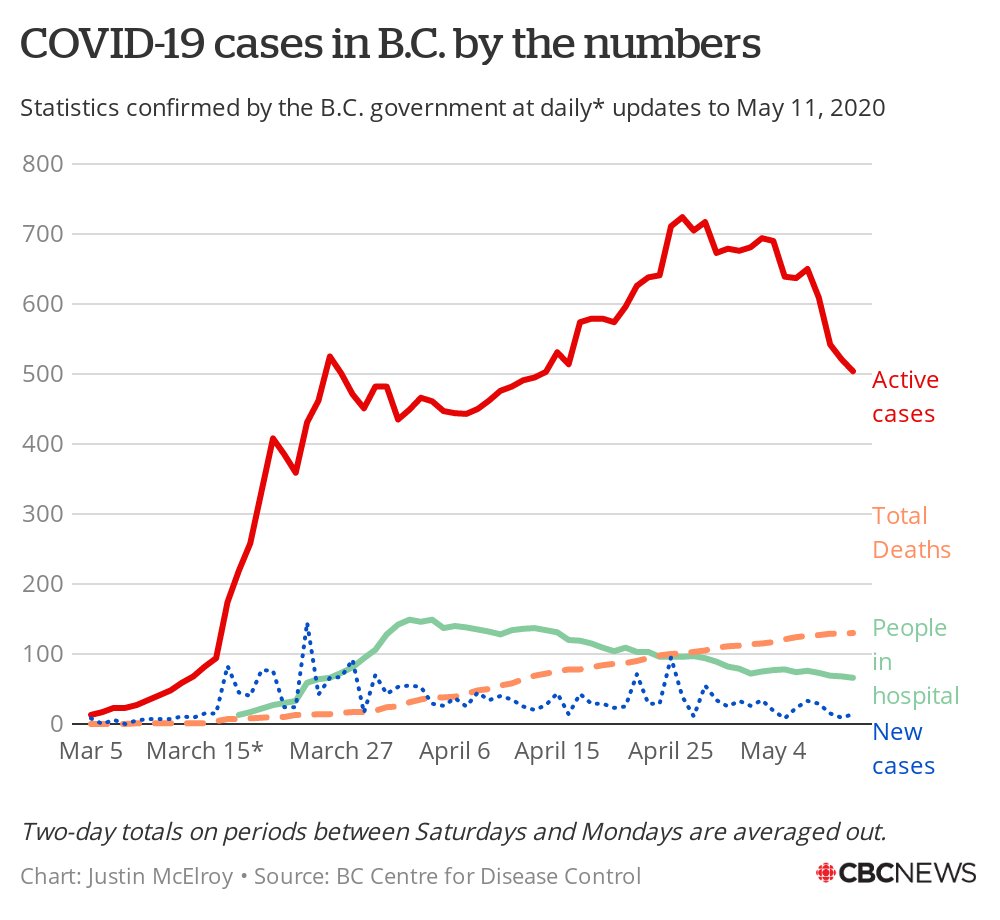https://www.facebook.com/photo.php?...RRMT-yLFKngc5NmBO5H67CJGhr9r4SGwKxYIqXhA4NH8h
This is an article out of the Portland Press Hearld. A worthy read how they envy our Co-19 response
Neighboring New Brunswick has kept the coronavirus in check. Here’s how.
Maine’s doppelganger neighbor, which acted early and decisively, has had no deaths and no nursing home outbreaks, and is down to just 2 active cases.
Maine and New Brunswick have a lot of similarities: a population that is elderly, low density and overwhelmingly rural; an economy dependent on forestry, fisheries and tourism; and an absence of large cities. Their first confirmed coronavirus cases came on back-to-back days in mid-March.
Yet their experiences in the pandemic have radically diverged over the past eight weeks.
As of Friday, Maine had a total of 1,374 cases, 474 of them still active, and 63 deaths.
New Brunswick had 120 cases, two of them active, and not a single death or nursing home outbreak. From April 19 to May 4, there were no active cases in the province of 747,000, where the median age – 45.7 – is even higher than Maine’s and the population is more concentrated in urban areas. Our neighbor to the east accomplished this feat through a combination of early action by public officials, strict border closures, near universal public compliance, geographical advantages and dumb luck. While COVID-19 could still flare up and overwhelm the province, New Brunswick has weathered the first phase off the pandemic so well that its officials are able to think in terms of containing new cases rather than monitoring them.
“The population was a really big factor in the sense that people were very quick to adhere to the directions given by government, and from the government perspective they were also very quick to align decisions with the public health folks,” says Stephane Robichaud, CEO of the New Brunswick Health Council, a provincial government entity that evaluates the performance of the health system. “You have your asymptomatic people who are a huge factor, and if in the early days we had waited another week we probably would have been in a very different place today.”
Maine acted earlier than most rural states and has had far less transmission of the disease than New Hampshire or Massachusetts. Gov. Janet Mills declared a state of emergency March 15 and recommended a statewide closure of schools March 18, though it did not become mandatory until her stay-at-home order took effect April 2. Mills issued an executive order banning public-facing activities at nonessential businesses March 24, and restaurant dining rooms have been closed since March 18. The state’s most popular coastal state parks were closed March 27.
But New Brunswick acted even faster. It confirmed its first case March 11, the day before Maine: a woman in her 50s who had traveled to France. Two days later, before any additional cases were confirmed, officials announced they were shutting down all public schools. Nonessential government services closed March 17 and provincial parks March 19.
Canada also sealed off the U.S. border for nonessential travel March 20, and on March 25 New Brunswick Premier Blaine Higgs banned nonessential travelers from entering the province from the rest of Canada as well. Higgs, a member of the Conservative Party, introduced border controls on the province’s frontiers with Quebec, Nova Scotia and Prince Edward Island, where police continue to turn away an average of 38 vehicles a day, Higgs said last week. Seasonal homeowners are being turned away at the border and airport checkpoints as well.
“The biggest thing that allowed us to control the pandemic – and I hate to say this – is closing the borders, because most of the cases in New Brunswick were travel-related and from people returning from the U.S.,” says Dr. Eilish Cleary, a physician and New Brunswick’s former chief medical officer. “This allowed us to control the amount of disease that was brought in and reduced the risk.”
The province’s relative isolation also proved an asset. There are very few international flights into the province’s three primary cities – Fredericton, Moncton and Saint John – which may have helped it avoid the worse situation in Nova Scotia, where there have been 1,008 cases and 46 deaths, most of them clustered in the Halifax area. It’s far from North American hotspots in Boston, New York City and Montreal.
Luck was also at play. Even though community transmission began to occur – starting with a school bus driver from suburban Saint John who hadn’t traveled out of the province recently – somehow nobody brought the virus into a nursing home, prison or factory. “Senior homes have been where most of the deaths have occurred in Quebec and Nova Scotia, but our senior care centers have been spared,” Robichaud says. “That could have been a huge factor that would have made us more like Nova Scotia.”
There has also been broad public compliance, with neighbors even applying social pressure to returning snowbirds to ensure they strictly adhere to 14-day quarantine requirements. While following scientific advice on how to minimize the effects of the pandemic has become politicized in the United States, parties across the Canadian political spectrum have agreed on the strategy, and their federal government has acted to purchase personal protective equipment, tests and other key products, and distribute it based on need.
“What you find here is a society that, while less deferential than 40 or 50 years ago, is still more deferential to government and the role of provincial, federal, and public health authority figures,” says former federal senator Hugh Segal, who served as chief of staff for Conservative Party Prime Minister Brian Mulroney and is now a fellow at Queen’s University in Kingston, Ontario. He says this makes Canada distinct from the United States.
“The founding values of peace, order, and good government and of life, liberty and the pursuit of happiness have had different impacts on the ways in which the societies have grown and the way in which their underlying political and social values have operated,” Segal notes, with Canada’s more communitarian ethos proving an asset in responding to the pandemic.
The province has moved cautiously to reopen, and was expected to announce Friday a plan to allow the resumption of elective surgeries and to open day cares, offices, retail stores and other businesses. Officials have said they will reintroduce restrictions if they see three new, unconnected community cases over a six-day period.
It’s also considering allowing travel to and from Prince Edward Island, an island province connected to the rest of Canada only via a bridge and ferries to New Brunswick that has only one active COVID-19 case and has seen no deaths. But officials remain on guard.
“What we’re appreciating more with each passing week is just how fast this can spread,” says Robichaud.






